Perennial in the tropics, lemongrass can reach a height of 2 meters and has fragrant leaves. Its stems are strong at the base, and the leaves spread out as they mature. By examining the form and color of the plant’s leaves, you can identify lemongrass. There are no thorns on its smooth and hairless leaves, which are white and greener on the bottom. So let’s check out a way of earning 10 Lahks from lemongrass farming.
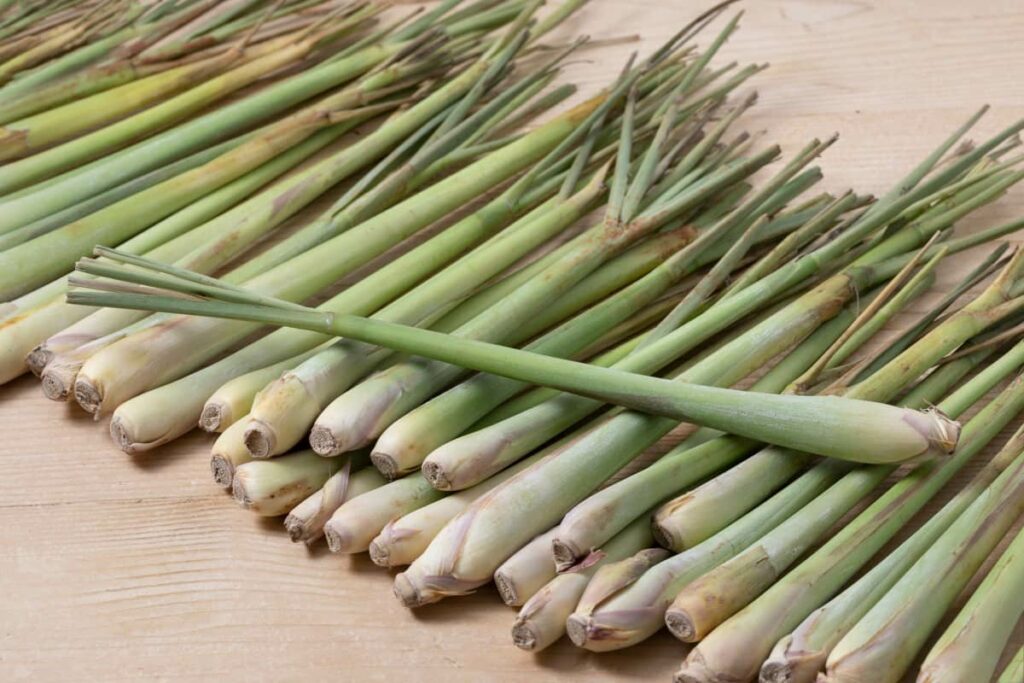
Due to its extraordinary characteristics, lemongrass has been employed in many rituals for generations. Because of its medicinal capabilities, science could not keep its eyes off it. Because of its mildly bitter and fragrant flavor and ability to cool the body while increasing perspiration, lemongrass is famous for relieving pain and increasing perspiration.
The essential oil of lemongrass can be extracted from the plant, a potent antifungal and bactericidal agent. Citral and citronella, two powerful sedatives, comprise around 70 percent of this lemongrass oil. Lemongrass can treat respiratory infections, sinusitis, bladder infections, excessive cholesterol, and varicose veins.
Earning 10 Lakh From Lemongrass Farming
Scope of Lemongrass Farming
A rise in demand for lemongrass from overseas has increased the profitability of lemongrass growing for our farmers. Exporting is the only way to earn a good return on investment for a bit of money. It is possible to cultivate lemongrass in India due to our climate and topography. India produces more than one-fourth of the world’s lemongrass. Because of the high demand for lemongrass in so many various uses, primarily through imports, cultivating it has become a thriving business.
Even though lemongrass is now exported from several countries, the market for the plant remains robust and profitable. It is common in India to buy a kilogram of lemongrass oil for Rs 1200 to Rs 1800. Approximately 480 kg of lemongrass oil may be generated yearly from only one hectare of land.
Investigate the cost of growing lemongrass. Gathering lemongrass leaves every 3 to 4 months for six years is possible. Second-year harvesting allows three to four leaf extractions compared to two in the first year. It costs roughly 3 to 5 rupees for each sapling or seed to plant one hectare of lemongrass. Therefore, getting a 15% to 22% return on investment and profit is possible.
The Success Story of Mr. Samba Shiva
Mr. Samba Shiva is a farmer from Srikakulam district, Andhra Pradesh. He owns 10 acres of land and uses it to cultivate different crops on his farm by conventional agriculture practices. However, he saw little profit from farming. There used to be frequent attacks from animals that led to severe damage to his farm. Also, past natural disasters such as Hudhud and Titli damaged his crops severely, resulting in huge losses.
At a point in time, he wanted to quit agriculture and do some business. But his friends told him about the lemongrass plant. This immediately attracted him. He started investigating many of his friends who were into agriculture and asked many agriculture college professors about lemongrass farming. He learned how to cultivate lemongrass and all the steps and practice methods used to cultivate lemongrass.
While in this process, he also learned that lemongrass doesn’t attract any animals and is very easy to manage. Not only that, but he also learned that lemongrass is very suitable for the land he owns. He then immediately started the necessary work and entered into lemongrass cultivation. He owns a 10-acre lemongrass farm and has his distillation unit to extract lemongrass oil. Let us get into the details.
Land Preparation Details, According to Mr. Samba Shiva
You don’t require very fertile land to grow lemongrass. Lemongrass is a hardy crop and can withstand hard temperatures. It can also grow in medium-rich soils and waste or dry land. If you live in a tropical region with more sunlight, you can choose this lemongrass to cultivate on your farm. You have to plough your field before starting lemongrass cultivation.
In case you missed it: How to Start Polyhouse Farming from Scratch: For Vegetables, Flowers, and Herbs
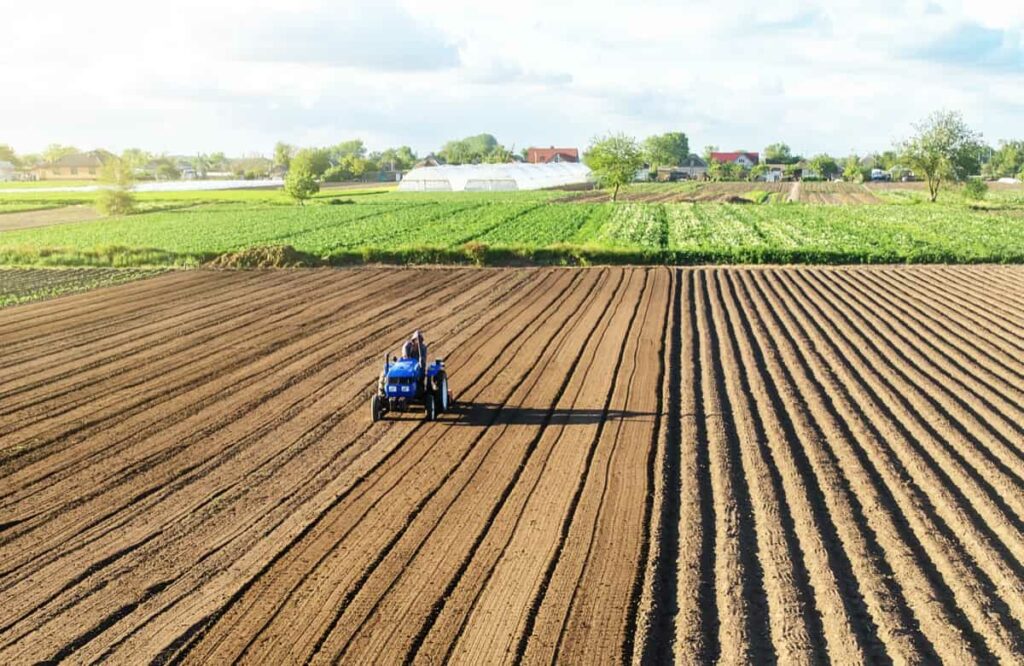
While preparing the land, ensure enough trenches to drain the water in case of heavy rainfall or water accumulation. After ploughing, you have to use 40 kg of urea, 100 kg of superphosphate, and 40 kg of potash per acre to treat the soil, says Mr. Samba Shiva. He also says using animal manure to treat the soil after ploughing is better. Your main aim is to grow quality crops, producing quality oil.
Cultivation of Lemongrass, According to Mr. Samba Shiva
Mr. Samba Shiva cultivates lemongrass on 10 acres. He says there are different types of lemongrass, like Krishna, Kaveri, Java, etc. He chose the Krishna variety to grow on his land since it has the most chance of producing better quality oil. It would help to remember that oil quality is essential for generating profits in lemongrass farming. It takes nearly 15,000 to 18,000 slips/seedlings to plant for one acre.
These slips should be planted at a distance of 60×45 cm in wetlands and 60×30 cm in drylands. Since this is a type of grass, it won’t attract any animals and other rodents, which can benefit you. And also, as it is a hardy crop, it doesn’t need much water and grows happily in tropical regions. After 30 to 50 days after they start growing, treat them with water and add another 20 kg of urea and 20 kg of potash near the stems of every plant, says Mr. Samba Shiva.
He says to cultivate these crops, drylands are best. If you continuously provide them with water for more than one week, they get prone to various fungi, and your crop might have a high chance of dying. From his experience, Mr. Samba says you only have to water your plants when the leaf changes to light brown. As soon as you provide them with water, you can see them glowing green in just a few days. The goal is to maintain this green color till harvesting time.
In case you missed it: How to Earn Excellent Income Returns with Commercial Vertical Farming
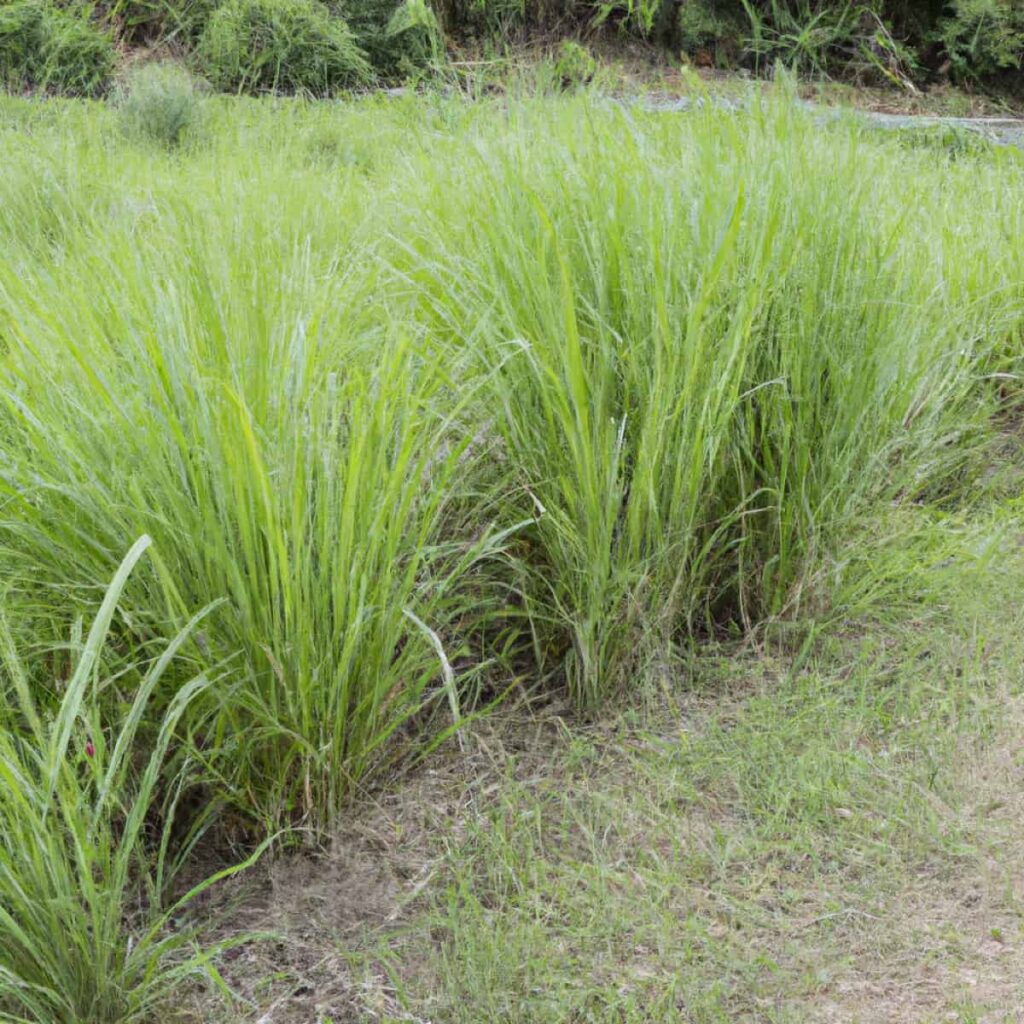
These also require less labor, and this crop is straightforward to manage. They will continue to grow even if you don’t provide them water for an entire month; if the area where you are growing lemongrass receives even a little rainfall now and then, you won’t even need to provide them with water, says Mr. Samba. It takes nearly 4 to 5 months for the first harvest. All the subsequent harvests can only take up to three months maximum, which means you can harvest this grass three times a year if you start the same year.
Afterward, you can harvest four times a year. You won’t get any profits after the first harvest. Earnings after the second harvest are also minimal. The actual revenue generates from the third harvest onwards. After every harvest, you have to treat your farm again with 30 to 40kg of urea and 10 to 15 kg of potash. Treat your farm with fertilizers twice before every harvest, nearly once in 35 to 40 days.
Weed control is also one of the most crucial elements in lemongrass farming. If you can control the weed in the first 60 days, you won’t need to take care of the weed again. One of the benefits of growing lemongrass is it doesn’t attract any insects. Lemongrass is commercially used as an insect repellent, so you don’t have to worry about insects. However, it can get prone to diseases only when there is no proper care. For example, the fungus can attack it when supplied with high water.
Mr. Samba Shiva has his distillation unit, which he set up when he started his 10-acre lemon grass farming. When asked why he set up a distillation unit, he replied that growing and selling lemongrass doesn’t have huge profits, but you have a huge profit margin if you extract oil from it and sell it to the traders. To remove oil from lemongrass, you need to have a distillation unit. Mr. Samba Shiva purchased equipment for five lakhs and installed a distillation unit near his farm.
It took him six lakhs to set up the lemongrass oil extraction distillation plant, says Mr. Samba. As soon as he harvests the lemongrass, he transfers it to the distillation unit; the laborers feed the equipment with lemongrass, and they need to set up a heat source for steam to generate. So they start a fire in the bottom of a cylindrical tank to provide the necessary heat to the unit.
In case you missed it: How to Grow Jalapeno Peppers from Seed: A Step-by-Step Guide for Types, Seed Germination, and Planting
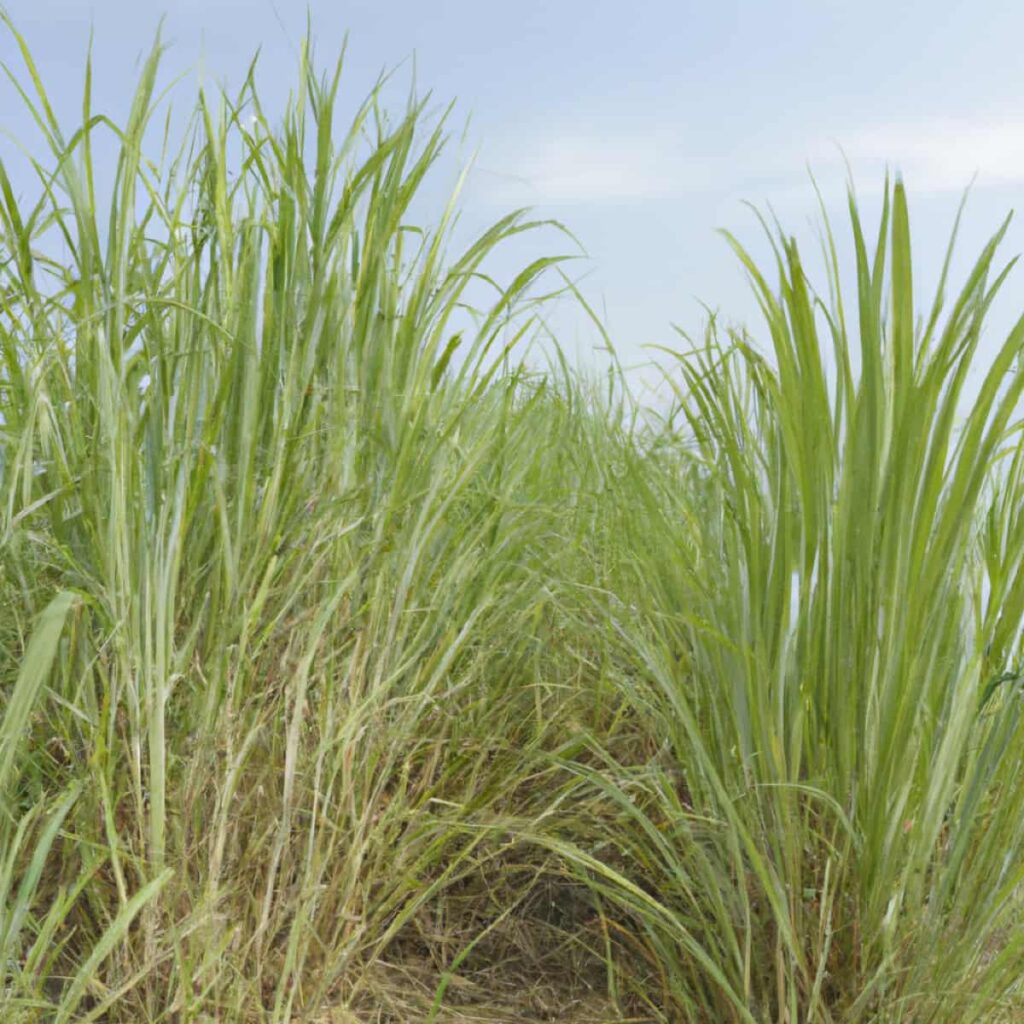
Once done, after an hour, it starts producing oil slowly, and waste hot water is drawn out with the help of pipes. If you produce 3 tonnes of lemongrass, you get 30 liters of oil for an acre. This means you can produce 3 percent of oil from an acre yield of lemongrass. In this way, Mr. Samba Shiva extracts the oil from the lemongrass
Marketing and Profitability Analysis of Mr. Samba Shiva’s Lemongrass Farm
Mr. Samba Shiva cultivates lemongrass on 10 acres, and he says that each acre can produce a yield of 3 tonnes per harvest. For 3 tonnes of lemongrass yield, you can produce 30 liters of oil. The market price of lemongrass is between 1400 and 1700 per liter. You can also assume this as lemongrass price per kg in India. Mr. Samba Shiva says that he sells his oil at rupees 1600 per liter but assumes the lower price is 1400 rupees per liter. By this, you can calculate the lemongrass cultivation profit per acre.
Mr. Samba Shiva says he harvests lemongrass four times a year, which means he gets nearly 1200 liters of lemongrass oil per year from his 10-acre farm and sells them at rupees 1400 liter; his average income per year is almost 16 lakh rupees per year. He says his running investment is only 6 lakh rupees per year. If he erases his investment, he gets a profit of nearly 10 lakh rupees per year from his 10-acre lemongrass farm. This is huge for a farmer.
In this way, Mr. Samba Shiva is a proud owner of his 10-acre lemongrass farm. He advises farmers to enter this industry since the maintenance is effortless, involves less investment, and makes huge profits. Although before starting, he wants farmers to investigate the market price of lemongrass oil. If it is 900 rupees per liter or above, it is still profitable, says Mr. Samba Shiva. Mr. Samba Shiva is now pleased and satisfied with what he has been doing since he entered this business.
Frequently Asked Questions about Lemongrass (FAQs)
Is Lemongrass Cultivation Profitable?
Locally, lemongrass oil costs between Rs. 1500 and Rs. 2000 per liter. Farmers might make up to Rs 80,000 annually from an acre of land. The first one-time investment is only Rs 20,000.
In case you missed it: Top 15 Agritech Startups Helping Farmers in India: Smart Farming for High Yields and Low Pests and Disease
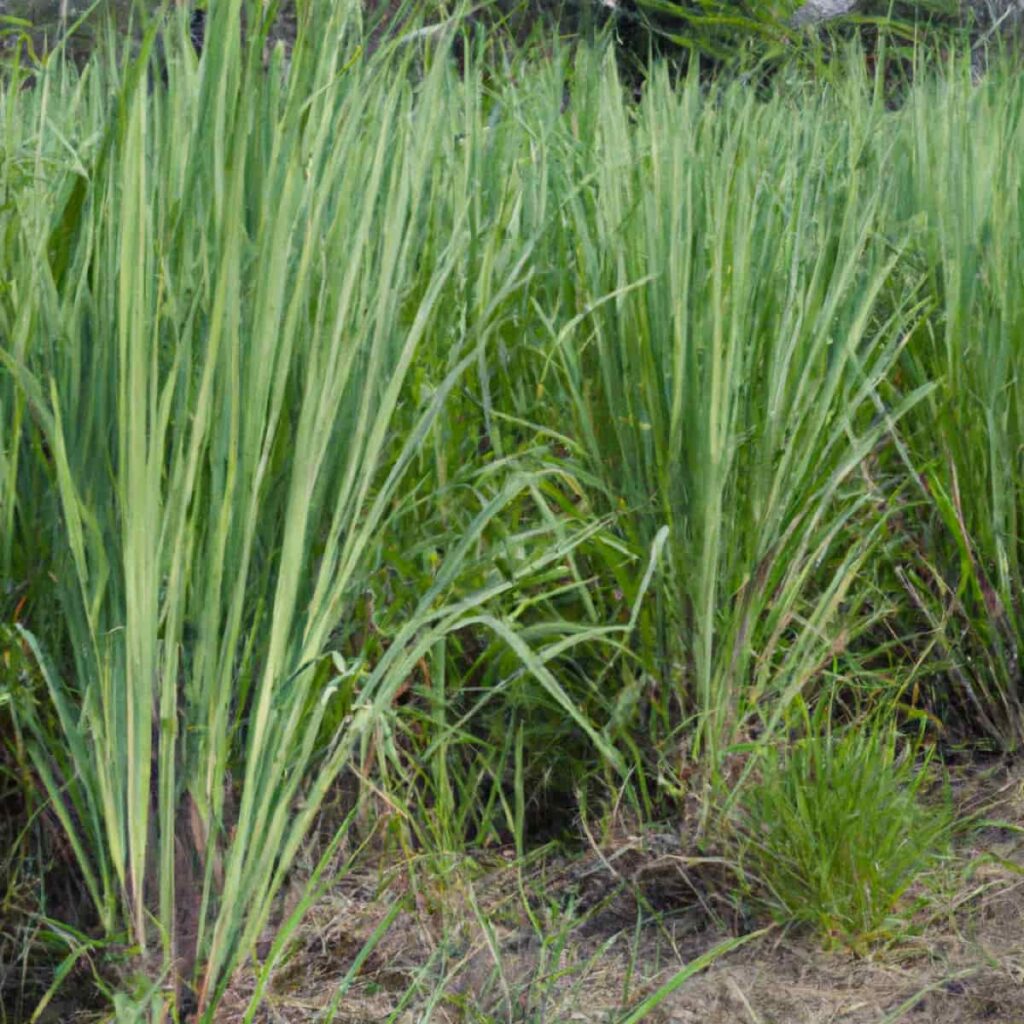
What is the Yield of Lemongrass?
The lemongrass can produce up to 300 kg of oil in 4-5 cuttings over 16-18 months. This variety’s average herbage output is 15 to 20 metric tonnes per hectare per year, yielding 100 to 110 kg of oil. Fresh weight basis, the oil content is between 0.6 and 0.8%, with 80% citral.
How Does Lemongrass Grow?
Cultivating lemongrass in semi-arid places with low to moderate rainfall is possible. Medium-fertilized soils and moderate irrigation systems are ideal for growing lemongrass. The plant thrives in sandy loam that is well-drained. Soil types ranging from loam to poor laterite can be used to cultivate lemongrass.
How to Farm Lemongrass?
Propagation is best done via seeds cultivated in nurseries, and 2.5 to 3 kg of fresh seed yields seedlings for one hectare of land and divides the clumps into individual plants. Keep a space of 60 cm by 80 cm when planting them.
How Fast Does Lemongrass Grow?
When grown into a large bush, lemongrass can be harvested for around 4 to 6 months. Once the lemongrass plants run, you’ll have an almost endless supply.
In case you missed it: Indian Government Subsidies for Polyhouse Farming: How to Double Your Agricultural Profits
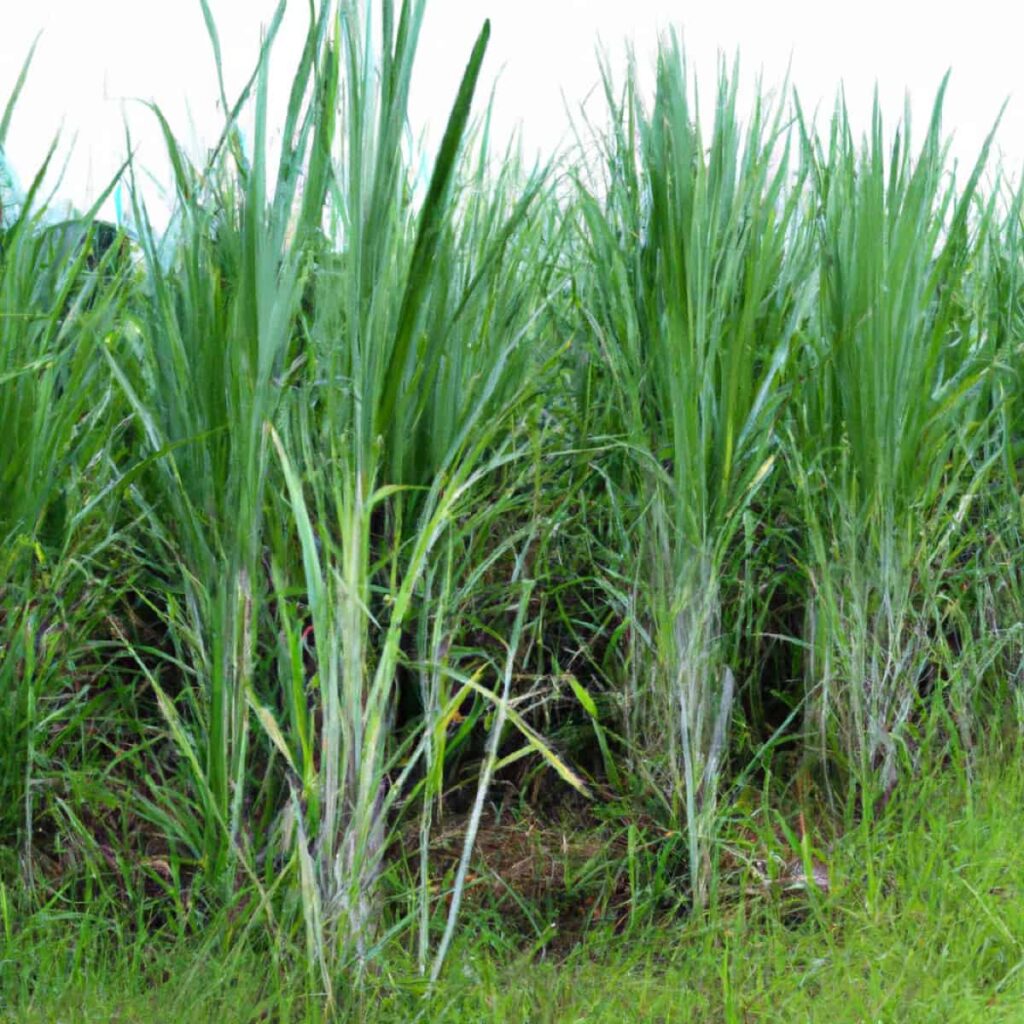
Conclusion
With proper business plans and marketing strategies, lemongrass farming is highly profitable. We wish you good luck with your next lemongrass farming project.
- Crops Grown in Summer Season: Best Choices for Summer Gardening
- Organic Pest Control for Tomato Farming
- How to Maximize Sheep Farming Profit
- Broccoli Varieties: Choosing the Right Cultivars for Your Farm
- How to Raise Pigs in Your Own Backyard: A Comprehensive Guide
- Budget Friendly Sheep Shed Ideas: Cheap and Low-Cost Tips
- How Much Do Cattle Farmers Make: Revenue Streams in Cattle Farming
- Management Pests and Diseases in Your Cotton Field
- Sheep Farming Business Plan for Beginners
- Aquaponic Farming at Home: A Step-By-Step Guide
- Profitable Village Farming Business Ideas in 2024
- High-Yield Aquaculture: Fast-Growing Fish for Farming
- Effective Fish Pond Construction Techniques for Beginners
- Irrigation and Water Management in Pineapple Farming
- Blossom to Harvest: Mastering Flowering and Pollination in Papaya Farming
- Pig Fattening Essentials: From Selection to Sale for Beginners
- Raising Wagyu Cattle: A Complete Guide for Premium Beef Production
- Soil Types and Their Water Holding Capacity
- Optimizing Irrigation Schedules for Coconut Groves for Enhanced Yield
- Espresso Your Garden: Coffee Grounds for Healthier Acid-Loving Plants
- The Best Soil Mix for Snake Plants: How to Mix Your Own Snake Plant Soil
- Green Thumb Success: Expert Tips for Cultivating Greenhouse Beans All Year Round
- Bloom All Year Round: The Ultimate Guide to Indoor Hyacinth Care
- Eco-Friendly Gardening: How to Make Liquid Fertilizer from Kitchen Waste
- Ultimate Guide to Grow Anise in Pots: Explore Seed Propagation to Harvesting
- Guide to Raising Chester White Pigs: Discover Breed Facts to Growth Management
- Mastering the Elegance: The Ultimate Guide to Weeping Cherry Tree Care, Planting, and Maintenance
- Ultimate Guide to Planting Garlic in Grow Bags: Growing Strategies for Beginners
- How to Fix Spider Plant Leaf-Related Problems: Natural and Organic Remedies
- 10 Reasons Why Your Tulsi Plant is Shedding Leaves: Home Remedies and Solutions
- Optimizing Growth and Yield: The Advantages of Palm Bunch Ash Fertilizer
- Utilizing Neem Oil Extract as a Natural Pesticide for Hydrangea
- From Soil to Harvest: Various Ways in Which Farmers Can Use AI Tools
- Steps to Encourage and Induce Citrus Flowers: A Comprehensive Guide
- How to Fix Snake Plant Leaf-Related Issues: Natural and Organic Remedies
- Transform Your Garden into a Fragrant Oasis with Raat Ki Rani (Night Blooming Jasmine)
